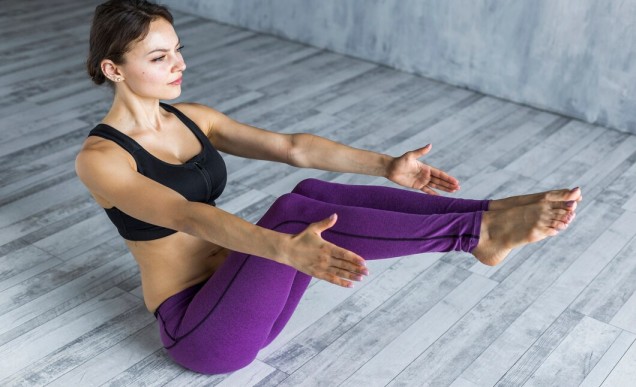Yoga, an ancient practice with roots in India, offers a path to self-discovery, inner peace, and holistic well-being. At its core, yoga encompasses much more than physical postures and exercises; it is a profound spiritual and philosophical journey. Understanding the ultimate goal of yoga involves exploring its deeper purpose and the transformative benefits it offers. Here’s an in-depth look at the ultimate goal of yoga and its purpose:
Self-Realization
- Discovering the True Self: The ultimate goal of yoga is to realize one’s true self, beyond the physical body and mental constructs. This involves understanding one’s inner essence, or “Atman,” which is considered eternal and unchanging. Self-realization is about recognizing the deeper, immutable part of oneself that connects with the universal consciousness.
- Experiencing Unity: Yoga aims to foster a sense of unity with the universe. This state of oneness transcends personal identity and ego, allowing individuals to experience a profound connection with all existence. This realization leads to an understanding that the self is an integral part of a larger, interconnected whole.

Liberation (Moksha)
- Freedom from Samsara: One of the primary goals of yoga is to achieve Moksha, or liberation, which is freedom from the cycle of birth, death, and rebirth (samsara). This liberation represents an end to suffering, ignorance, and attachment, offering a state of ultimate freedom and peace.
- Transcending Material Limitations: Yoga seeks to transcend material desires and ego-based limitations. By overcoming these attachments, practitioners can experience a state of liberation where they are no longer bound by worldly concerns or personal identity.
Inner Peace and Harmony
- Mental Clarity: Yoga promotes mental clarity and tranquility through practices such as meditation and mindfulness. By calming the mind and reducing stress, yoga helps individuals achieve a state of inner peace and emotional stability.
- Emotional Balance: Through self-awareness and self-compassion, yoga encourages emotional balance. It helps practitioners manage their emotions, fostering a more harmonious and balanced emotional state.
Physical and Mental Well-being
- Enhancing Physical Health: While the ultimate goal of yoga is spiritual, physical well-being is a significant aspect of the practice. Asanas (postures) and other physical practices improve flexibility, strength, and overall health, creating a supportive foundation for spiritual growth.
- Developing Mental Strength: Yoga also builds mental resilience and focus. It encourages discipline, self-control, and a positive mindset, which are essential for navigating life’s challenges and fostering personal growth.

Spiritual Growth
- Deepening Spiritual Awareness: Yoga is a path to spiritual growth and self-discovery. Through various practices such as meditation, chanting, and ethical living, practitioners deepen their spiritual awareness and understanding.
- Connecting with Higher Consciousness: The ultimate aim of yoga is to align with a higher consciousness or divine presence. This alignment involves experiencing spiritual awakening and enlightenment, leading to a profound sense of connection with the universe.
Living in Alignment with Universal Principles
- Adhering to Ethical Principles: Yoga incorporates ethical guidelines known as the Yamas and Niyamas. These principles include non-violence, truthfulness, contentment, and self-discipline. Living in accordance with these principles promotes harmony and integrity in one’s life.
- Fostering Compassion and Connection: Yoga encourages compassion, empathy, and kindness towards oneself and others. By cultivating these qualities, practitioners contribute to a more harmonious and interconnected world.
Conclusion
The ultimate goal of yoga is to achieve self-realization, liberation, and a profound sense of inner peace. This goal is realized through a comprehensive approach that integrates physical, mental, and spiritual practices. By understanding and embracing the deeper purpose of yoga, practitioners embark on a transformative journey towards self-discovery, personal growth, and spiritual enlightenment. Yoga is not merely a set of physical exercises but a holistic path that guides individuals towards a more fulfilled and harmonious existence.

FAQ: What is the Ultimate Goal of Yoga?
1. What is the ultimate goal of yoga?
The ultimate goal of yoga is to achieve self-realization and liberation. Self-realization involves understanding and experiencing one’s true nature beyond physical and mental constructs. Liberation, or Moksha, is the freedom from the cycle of birth, death, and rebirth (samsara), and the end of suffering and attachment.
2. How does yoga lead to self-realization?
Yoga leads to self-realization by:
- Practicing Mindfulness: Through meditation and mindfulness, practitioners develop greater self-awareness and insight into their true nature.
- Transcending the Ego: Yoga practices help individuals move beyond the ego and personal identity, experiencing a sense of unity with the universe.
- Cultivating Inner Peace: By calming the mind and fostering self-compassion, yoga facilitates a deeper understanding of oneself.
3. What is Moksha, and how does yoga help achieve it?
Moksha is the state of liberation from the cycle of samsara, or rebirth, and the end of suffering. Yoga helps achieve Moksha by:
- Overcoming Attachments: Yoga practices encourage letting go of material desires and ego-based attachments.
- Transcending Ignorance: Through self-knowledge and spiritual practices, yoga helps overcome ignorance and delusion about the true self.
4. How does yoga contribute to inner peace and harmony?
Yoga contributes to inner peace and harmony by:
- Reducing Stress: Practices such as asanas (postures) and meditation help manage stress and promote relaxation.
- Promoting Emotional Balance: Yoga fosters emotional stability and resilience, aiding in the management of emotions and improving overall well-being.
5. In what ways does yoga enhance physical and mental well-being?
Yoga enhances physical and mental well-being through:
- Physical Health: Asanas improve flexibility, strength, and overall health, creating a solid foundation for further spiritual practice.
- Mental Strength: Yoga practices build mental discipline, focus, and a positive mindset, contributing to overall resilience and personal growth.
6. How does yoga support spiritual growth?
Yoga supports spiritual growth by:
- Deepening Awareness: Through various practices like meditation and self-reflection, yoga deepens spiritual awareness and understanding.
- Aligning with Higher Consciousness: Yoga guides practitioners towards experiencing a higher state of consciousness and spiritual awakening.
7. What role do ethical principles play in achieving yoga’s ultimate goal?
Ethical principles, known as the Yamas and Niyamas, are crucial for achieving yoga’s ultimate goal. They include:
- Non-violence (Ahimsa)
- Truthfulness (Satya)
- Contentment (Santosha)
- Self-discipline (Tapas)
- Purity (Saucha) These principles guide practitioners to live harmoniously, promoting inner and outer balance.
8. Can yoga’s ultimate goal be achieved through physical practice alone?
While physical practice (asanas) is an important aspect of yoga, achieving the ultimate goal involves more than just physical postures. It includes:
- Mental and Emotional Practices: Meditation, mindfulness, and self-inquiry are essential for achieving self-realization and liberation.
- Ethical Living: Adhering to ethical principles and cultivating a compassionate attitude are integral to the practice.
9. How can beginners start working towards the ultimate goal of yoga?
Beginners can start working towards the ultimate goal of yoga by:
- Exploring Yoga Philosophy: Learning about the philosophical and spiritual aspects of yoga.
- Practicing Regularly: Engaging in regular yoga practice, including asanas, meditation, and mindfulness.
- Setting Intentions: Setting positive intentions and goals for personal growth and self-discovery.
10. Is achieving the ultimate goal of yoga a quick process?
Achieving the ultimate goal of yoga is not a quick process. It is a lifelong journey that involves:
- Consistent Practice: Regular and dedicated practice is essential for progress.
- Personal Growth: The process involves ongoing self-discovery, personal growth, and spiritual development.
11. How can yoga help in everyday life beyond its ultimate goal?
Yoga helps in everyday life by:
- Improving Physical Health: Enhancing flexibility, strength, and overall wellness.
- Reducing Stress: Promoting relaxation and mental clarity.
- Fostering Emotional Well-being: Encouraging emotional balance and resilience.
- Promoting Mindfulness: Enhancing awareness and presence in daily activities.
12. Are there specific practices that focus on achieving the ultimate goal of yoga?
Yes, specific practices that focus on achieving the ultimate goal of yoga include:
- Meditation: To cultivate self-awareness and inner peace.
- Pranayama: Breath control practices to enhance mental clarity and emotional balance.
- Self-Inquiry: Reflective practices to understand and realize the true self.
- Ethical Practices: Following the Yamas and Niyamas to live in harmony with oneself and others.

